Family

 Our aunt, Charlys Schulenberg is all about family. She and Uncle Butch have three grown children, Tadd, Andi Kay, and Heath; as well as spouses and seven grandchildren. Their marriage has been very blessed, and Charlys is always happy when she gets to see her kids and grandkids. Unfortunately, their children don’t live in Forsyth, Montana where Aunt Charlys and Uncle Butch live, but thankfully they don’t live too far away…one in Helena, Montana and two in Sheridan, Wyoming. That kind of closeness means that they and easily plan for family gatherings, and I’m sure that makes everyone very happy.
Our aunt, Charlys Schulenberg is all about family. She and Uncle Butch have three grown children, Tadd, Andi Kay, and Heath; as well as spouses and seven grandchildren. Their marriage has been very blessed, and Charlys is always happy when she gets to see her kids and grandkids. Unfortunately, their children don’t live in Forsyth, Montana where Aunt Charlys and Uncle Butch live, but thankfully they don’t live too far away…one in Helena, Montana and two in Sheridan, Wyoming. That kind of closeness means that they and easily plan for family gatherings, and I’m sure that makes everyone very happy.
Aunt Charlys is such a sweet person, and a great blessing to be around…if you like being spoiled, and let’s be real, who doesn’t like being spoiled. The times Bob and I went to visit, I found out just what a great cook Aunt Charlys is. She and Uncle Butch have a lovely home in a senior community, that overlooks the Yellowstone River. That view is spectacular, and it inspires lots of pictures of stunning sunsets over the river. Not to mention 
 many evenings sitting in the back yard watching the river go by as the sun sets. There is nothing more peaceful than that. They also have beautiful flower gardens, and a nice lawn that they really don’t have to mow, although I think Butch might mow sometimes. Their place is just such a lovely setting, and they feel so at peace there. Of course, they also have their vegetable garden, and from what I’ve seen, it looks pretty good…at least the past ones did. Each year is new and different, and I pray that they have a great crop this year.
many evenings sitting in the back yard watching the river go by as the sun sets. There is nothing more peaceful than that. They also have beautiful flower gardens, and a nice lawn that they really don’t have to mow, although I think Butch might mow sometimes. Their place is just such a lovely setting, and they feel so at peace there. Of course, they also have their vegetable garden, and from what I’ve seen, it looks pretty good…at least the past ones did. Each year is new and different, and I pray that they have a great crop this year.
While I have never met Aunt Charlys’ sister, Carol Hansell, who lives in Mississippi, but I love the relationship they have. Charlys, Butch, and Carol are always teasing each other, which reminds me of my own sisters and me. I love when siblings can joke around and make each other laugh, because let’s face it, you can never laugh too much. And siblings…well, they are priceless. It used to be that if you and your siblings were going to be very close, you needed to live near each other, but now with so many options on the internet, like Facebook, you can stay close, even over the miles. It makes me happy for Aunt Charlyn and her sister.


Even though we don’t get to see Aunt Charlys and Uncle Butch as much as we would like to, because we too live a way away from them. I always feel a closeness to them when we are there, or even when we are just having a Facebook conversation. They are both such friendly and welcoming people, and they make everyone feel really happy. Today is Aunt Charlys’ birthday. Happy birthday Aunt Charlys!! Have a great day!! We love you!!
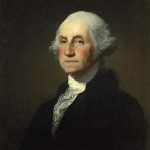
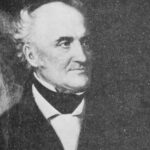 It seems entirely fitting that the first ship in the first navy of the new country, be called after that country. Hense the USS United States was launched on May 10, 1797. USS United States was a wooden-hulled, three-masted heavy frigate of the United States Navy. It was the first of the six original frigates authorized for construction by the Naval Act of 1794. As they were preparing to build the ship, they asked that names be submitted for consideration, and the name “United States” was among the ten such names submitted to President George Washington by Secretary of War Timothy Pickering in March of 1795 for the frigates that were to be constructed. The frigates were designed by Joshua Humphreys to be the young Navy’s capital ships. They would need to be an example of greatness, and so USS United States and her sisters were larger and more heavily armed and built stronger than standard frigates of the period. USS United States ordered on March 27, 1794, built at Humphrey’s shipyard in Philadelphia, Pennsylvania, and launched on May 10, 1797. The USS United States immediately began duties with the newly formed United States Navy protecting American merchant shipping during the Quasi-War with France.
It seems entirely fitting that the first ship in the first navy of the new country, be called after that country. Hense the USS United States was launched on May 10, 1797. USS United States was a wooden-hulled, three-masted heavy frigate of the United States Navy. It was the first of the six original frigates authorized for construction by the Naval Act of 1794. As they were preparing to build the ship, they asked that names be submitted for consideration, and the name “United States” was among the ten such names submitted to President George Washington by Secretary of War Timothy Pickering in March of 1795 for the frigates that were to be constructed. The frigates were designed by Joshua Humphreys to be the young Navy’s capital ships. They would need to be an example of greatness, and so USS United States and her sisters were larger and more heavily armed and built stronger than standard frigates of the period. USS United States ordered on March 27, 1794, built at Humphrey’s shipyard in Philadelphia, Pennsylvania, and launched on May 10, 1797. The USS United States immediately began duties with the newly formed United States Navy protecting American merchant shipping during the Quasi-War with France.
“Joshua Humphreys’ design was deep, long on keel and narrow of beam (width) for mounting very heavy guns. The design incorporated a diagonal scantling (rib) scheme to limit hogging while giving the ships extremely heavy planking. This gave the hull greater strength than those of more lightly built frigates. Humphreys developed his design after realizing that the fledgling United States could not match the navy sizes of the European states. He therefore designed his frigates to be able to overpower other frigates, but with the speed to escape from a ship of the line.”
Of course, as with any naval ship, there is always the possibility of capture, sinking, or destruction. In 1861, 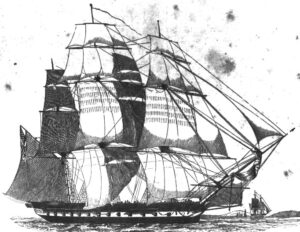 while the USS United States was in port at Norfolk, the Virginia Navy of the Confederacy managed to seize the ship. It was really one of the most hideous acts, if you ask me, for a ship named after this great United States to be stolen by the very group who was trying to tear this nation apart, is a heinous crime. Upon her capture, USS United States was subsequently commissioned into the Confederate navy as CSS United States…which is in itself a contradiction of terms. She was later scuttled by the Confederate forces. After retaking Norfolk, Virginia, the US Navy raised USS United States, but the aged and damaged ship was not able to be returned to service. USS United States was instead held at the Norfolk Navy Yard until she was broken up in December 1865. It was such sad ending for a great ship.
while the USS United States was in port at Norfolk, the Virginia Navy of the Confederacy managed to seize the ship. It was really one of the most hideous acts, if you ask me, for a ship named after this great United States to be stolen by the very group who was trying to tear this nation apart, is a heinous crime. Upon her capture, USS United States was subsequently commissioned into the Confederate navy as CSS United States…which is in itself a contradiction of terms. She was later scuttled by the Confederate forces. After retaking Norfolk, Virginia, the US Navy raised USS United States, but the aged and damaged ship was not able to be returned to service. USS United States was instead held at the Norfolk Navy Yard until she was broken up in December 1865. It was such sad ending for a great ship.

 My grandniece, Maeve Parmely is a sweet little girl, who is very quiet around people she doesn’t know well…even family. Nevertheless, once you find something that you have in common with her, she will come out of her shell, and can be a little chatterbox. Maeve, being a baby of the Covid era, sent her first couple of years around her family and grandparents…almost exclusively. That made her very leery of strangers, which her extended family had quickly become, but that is all in the past now. Maeve is growing up so quickly, and she is becoming an amazing little girl. Where once was a baby in need of lots of care, there now stands a girl who is capable of doing so many things. She may be the youngest in the family, but she is showing herself to be very diversified in her activities.
My grandniece, Maeve Parmely is a sweet little girl, who is very quiet around people she doesn’t know well…even family. Nevertheless, once you find something that you have in common with her, she will come out of her shell, and can be a little chatterbox. Maeve, being a baby of the Covid era, sent her first couple of years around her family and grandparents…almost exclusively. That made her very leery of strangers, which her extended family had quickly become, but that is all in the past now. Maeve is growing up so quickly, and she is becoming an amazing little girl. Where once was a baby in need of lots of care, there now stands a girl who is capable of doing so many things. She may be the youngest in the family, but she is showing herself to be very diversified in her activities.


As the youngest of four children, spending time with the older kids, Reagan, Hattie, and Bowen, is very important to Maeve. She looks up to them and wants to be like them. We all know that older siblings are the coolest, as far as the younger siblings are concerned. Whether it’s hanging out in the playhouse their dad, Eric built; playing in a pile of leaves together; hiking up to Garden Creek Falls with the family; cross-country skiing on the mountain; or sleep overs with the grandparents, Jennifer Parmely and Brian Cratty or Kari 
 and Albert Eighmy; Maeve is having a great time at everything she does.
and Albert Eighmy; Maeve is having a great time at everything she does.
Maeve is in pre-school this year and is busily learning to write the alphabet. Of course, like most kids, her favorite thing to do at school, is to go out to the playground. I don’t know of an elementary aged child who doesn’t like recess best. Maeve is being raised on a farm, and that means that she id around all kinds of animals. They family has chickens, turkeys, goats, pigs, cows, cats, dogs, and horses. Maeve’s favorite animals are horses and dogs. She loves to ride horses and has become quite good at it. I think her very favorite horses are the miniature horses owned by her family owns. Today is Maeve’s 4th birthday. Happy birthday Maeve!! Have a great day!! We love you!!
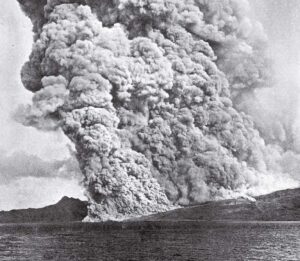 Anytime a volcano erupts, there is going to some degree of destruction, and most of the time, there is little notice. Some eruptions, however, bring more destruction and death that others. The eruption of Mount Pelée on the island of Martinique in the Caribbean on May 8, 1902, resulted in nearly 30,000 deaths and the destruction of the town of Saint Pierre. When the eruption occurred, the pyroclastic flow, also called a pyroclastic cloud, hit the town totally destroying it…or almost all of it. The city was virtually wiped off the map.
Anytime a volcano erupts, there is going to some degree of destruction, and most of the time, there is little notice. Some eruptions, however, bring more destruction and death that others. The eruption of Mount Pelée on the island of Martinique in the Caribbean on May 8, 1902, resulted in nearly 30,000 deaths and the destruction of the town of Saint Pierre. When the eruption occurred, the pyroclastic flow, also called a pyroclastic cloud, hit the town totally destroying it…or almost all of it. The city was virtually wiped off the map.
A prisoner, Ludger Sylbaris, who was born sometime around 1875. Sylbaris who used the aliases Auguste Ciparis, Joseph Surtout, and other names, was a convicted felon who had violated his parole. When he was captured, it was decided that he would be confined to an underground cell in Saint Pierre. As smoke filled the sky and lava made its way toward Saint Pierre, Sylbaris reportedly knew nothing of what was happening around him. Nevertheless, while he was right in the path of the destruction, his underground prison would end up protecting him while the rest of Saint Pierre was destroyed. The search for survivors consumed the rescue workers, and it wasn’t until four days after the city was destroyed that Sylbaris was found, half-conscious and burned.
The eruption of Mount Pelée began, or more correctly, it began to show signs on April 2, 1902. Mount Pelée, 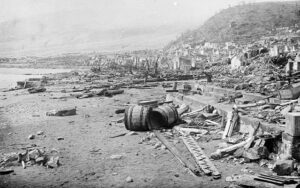 which means bald in French, was a 4,500-foot mountain on the north side of the Caribbean Island of Martinique. On April 2nd, new steam vents were spotted on the peak, which overlooked the port city of Saint Pierre. Three weeks later, tremors were felt on the island and Mount Pelée belched up a cloud of ash. That was all the warning they had, but in 1902, they might not have realized just how grave their situation was. On May 7, activity on the volcano increased dramatically and the blasts grew significantly stronger. Overnight, there were several strong tremors and a cloud of gas with a temperature of more than 3,000 degrees Fahrenheit spilled out of the mountain. Finally, a tremendous blast in the early morning hours of May 8th sent a pyroclastic flow of boiling ash down the side of the mountain. By the time anyone realized they were in serious trouble, it was too late to get away, which is what caused the 30,000 deaths. It also left the prisoner, Sylbaris in an underground cell, with no one knowing that he was there. Only a thorough search of the area and the fact that he had been housed underground, saved his life.
which means bald in French, was a 4,500-foot mountain on the north side of the Caribbean Island of Martinique. On April 2nd, new steam vents were spotted on the peak, which overlooked the port city of Saint Pierre. Three weeks later, tremors were felt on the island and Mount Pelée belched up a cloud of ash. That was all the warning they had, but in 1902, they might not have realized just how grave their situation was. On May 7, activity on the volcano increased dramatically and the blasts grew significantly stronger. Overnight, there were several strong tremors and a cloud of gas with a temperature of more than 3,000 degrees Fahrenheit spilled out of the mountain. Finally, a tremendous blast in the early morning hours of May 8th sent a pyroclastic flow of boiling ash down the side of the mountain. By the time anyone realized they were in serious trouble, it was too late to get away, which is what caused the 30,000 deaths. It also left the prisoner, Sylbaris in an underground cell, with no one knowing that he was there. Only a thorough search of the area and the fact that he had been housed underground, saved his life.
In the end, it was determined that because they were caught up in the midst of an important election, the 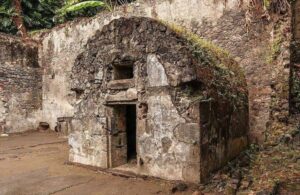 residents of Saint Pierre failed to heed the mountain’s warnings and evacuate. They mistakenly believed that the only danger from the volcano was lava flow and assumed that if lava started to flow, they would have plenty of time to flee to safety. In fact, some people came from outside the city to view the action, even after ash from the eruption began to block roads. The city of Saint Pierre was buried within minutes and virtually everyone died instantly. There were only two reported survivors, one being Sylbaris, the prisoner held in an underground cell. In addition to the destruction of the city, 15 ships in the harbor were capsized by the eruption. One ship managed to stay afloat with half the crew surviving, although most suffered serious burns.
residents of Saint Pierre failed to heed the mountain’s warnings and evacuate. They mistakenly believed that the only danger from the volcano was lava flow and assumed that if lava started to flow, they would have plenty of time to flee to safety. In fact, some people came from outside the city to view the action, even after ash from the eruption began to block roads. The city of Saint Pierre was buried within minutes and virtually everyone died instantly. There were only two reported survivors, one being Sylbaris, the prisoner held in an underground cell. In addition to the destruction of the city, 15 ships in the harbor were capsized by the eruption. One ship managed to stay afloat with half the crew surviving, although most suffered serious burns.
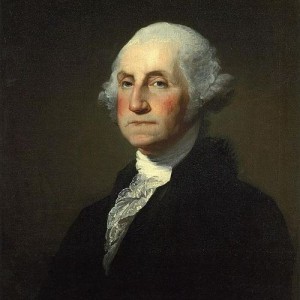
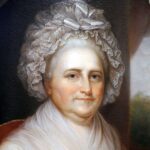 These days, when a president or other elected official is inaugurated, the ceremony is often followed that evening by an inaugural ball. In fact, it is pretty much expected, like the celebration of victory after a long, hard-fought battle. When our first president, George Washington was sworn into office as the first president of the United States, on the balcony of Federal Hall in New York City, New York, on April 30, 1789, all tradition concerning elections was brand new. Our country was still trying to figure out what our traditions would be at that point.
These days, when a president or other elected official is inaugurated, the ceremony is often followed that evening by an inaugural ball. In fact, it is pretty much expected, like the celebration of victory after a long, hard-fought battle. When our first president, George Washington was sworn into office as the first president of the United States, on the balcony of Federal Hall in New York City, New York, on April 30, 1789, all tradition concerning elections was brand new. Our country was still trying to figure out what our traditions would be at that point.
A week later, on May 3, 1789, George Washington attended a ball in his honor. These days inaugural balls are planned and held with every inauguration. In fact, most presidents attend several balls on inauguration night. Still, in 1789, they were brand new, and it would be another decade before the practice was revived, with the inaugural of James Madison, the fourth president. Dolley, President Madison’s wife, threw a gala for 400 people at Long’s Hotel in Washington. Tickets cost $4.00, which would have amounted to about $100.00 today. That was actually very reasonable, considering that they run about $350.00 today. I suppose that if you were part of high society, you would think nothing of that amount for a ball which would show your support of the new president, as well as, your position in society.
Since Madison’s inaugural ball, the events have become more or less a quadrennial presidential fixture. Today, we think nothing of the event, assuming that it is just part of the grand tradition of our electoral process and seating a new president. Nevertheless, there have been years that the Inaugural Ball has been cancelled. Woodrow Wilson, in 1913, and Warren Harding, in 1921, both passed up balls, citing the need to economize. Franklin Pierce canceled his in 1853 because of the recent death of his son. President Franklin D Roosevelt was another exception, choosing to work through the night rather than attend his first inaugural ball in 1933. He canceled the next three galas because of the Depression and World War II. 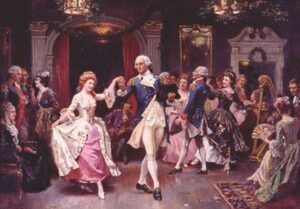
At the first ball, Washington danced with many ladies who were considered the cream of New York society. New York was the temporary site of the newly established federal government. Eliza Hamilton, wife of Alexander Hamilton, the treasury secretary, recorded her impressions in her memoirs. She wrote that Washington liked to dance the minuet, a dance she thought was “suited to his dignity and gravity.” In what would seem strange today, Martha Washington apparently did not attend the Inaugural Ball. One month to the day of her husband’s departure for New York, Martha Washington set out on her own triumphant trip to the seat of the new government, thereby becoming our first, First Lady.
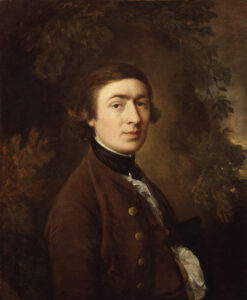 When an artist completes a painting, they really don’t know if it will bring a great price when it is auctioned off or not. They simply put forth their best work, and hope that the buyers see in the painting the same thing that they saw as they painted it. On May 6, 1876, Thomas Gainsborough found himself hoping against hope that he had created a masterpiece. This was going to be his best day ever, because his painting, Duchess of Devonshire, went beyond his greatest expectations when it sold to a London art dealer named William Agnew, for $51,540. It was the highest price ever paid for a painting at auction. My guess is that Gainsborough had a tough time breathing, and an even harder time not passing out as the bids continued to climb.
When an artist completes a painting, they really don’t know if it will bring a great price when it is auctioned off or not. They simply put forth their best work, and hope that the buyers see in the painting the same thing that they saw as they painted it. On May 6, 1876, Thomas Gainsborough found himself hoping against hope that he had created a masterpiece. This was going to be his best day ever, because his painting, Duchess of Devonshire, went beyond his greatest expectations when it sold to a London art dealer named William Agnew, for $51,540. It was the highest price ever paid for a painting at auction. My guess is that Gainsborough had a tough time breathing, and an even harder time not passing out as the bids continued to climb.
Agnew wanted that painting, and when he was triumphant in his quest, he couldn’t wait to display the painting at his gallery. So three weeks later he did just that, and the painting was promptly stolen by Adam Worth. This was not the first theft by Worth. He was quite sneaky and was later dubbed the “Napoleon of Crime” and was the person that Sir Arthur Conan Doyle eventually based Sherlock Holmes’ arch nemesis Dr Moriarty on. He stole the painting with the plan of getting enough money to pay his brother’s bail and get him out of jail. He 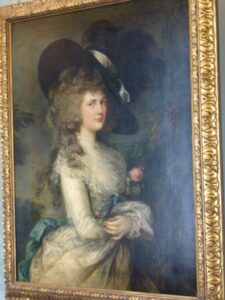 didn’t have the money that was needed for the release. As it turned out, his brother was freed without his help. At that point, Worth decided to keep the painting, even if he would most likely face the consequences.
didn’t have the money that was needed for the release. As it turned out, his brother was freed without his help. At that point, Worth decided to keep the painting, even if he would most likely face the consequences.
Worth “made a name for himself” as the 19th century’s most masterful criminal. Worth was born in Germany, but he was raised in the United States. He joined the Union Army in the Civil War. He was later erroneously reported killed in the Second Battle of Bull Run, but he actually spent the rest of the war hopping from one regiment to another, collecting money to join and then immediately deserting. Even then, he was not a man of integrity, but rather showed his criminal side early on. When the war ended, he made his way to New York, where he joined a gang of pickpockets. He was later convicted of robbery and sentenced to three years at Sing Sing Prison. Sing Sing couldn’t hold him, however, and after just a few weeks, Worth escaped and vowed to be more careful in the future. He began using the alias Henry Raymond and began a lucrative career robbing banks in America before deciding to take his criminal career to Europe. He began a series of perfectly planned heists, as well as a successful forgery operation. Somehow, Worth avoided all violent encounters and actually 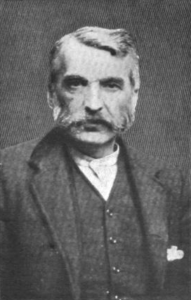 established himself in respectable society…until the heist that would become his downfall…The Duchess of Devonshire. His big mistake came when he failed to financially reward his co-conspirators, Joe Elliot and Junka Phillips. Understandably angered when Worth refused to divulge its whereabouts, the pair went to the police. Worth was sent to prison, on other charges, since the paintings whereabouts could not be determined. Worth spent four years in prison and was released in 1897. After returning to America, he finally had a change of heart and began negotiations with the Pinkerton Detective Agency to obtain a ransom for the painting.
established himself in respectable society…until the heist that would become his downfall…The Duchess of Devonshire. His big mistake came when he failed to financially reward his co-conspirators, Joe Elliot and Junka Phillips. Understandably angered when Worth refused to divulge its whereabouts, the pair went to the police. Worth was sent to prison, on other charges, since the paintings whereabouts could not be determined. Worth spent four years in prison and was released in 1897. After returning to America, he finally had a change of heart and began negotiations with the Pinkerton Detective Agency to obtain a ransom for the painting.
After paying, a relatively small ransom, the Duchess of Devonshire was finally returned to England in 1901. Almost immediately, J P Morgan, Wall Street’s biggest financier, journeyed to England to obtain the painting for himself. Its value undisputed, it is said that Morgan paid as much as $150,000 for it. As for Worth…when he died, just a year later, he was penniless.
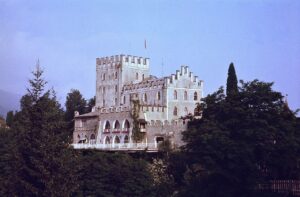 As World War II, was winding down, the Nazis, is typical form were holding high-profile French prisoners of war at Itter Castle in Austria. The Nazis were notorious for their terribly abusive treatment of prisoners. When it became obvious that all was lost, in May 1945, the prison’s guards fled and left Itter Castle waiting for a unit of Waffen-SS police, who were sent in to wipe out the French prisoners and carry out reprisals against the local population for any hints of surrender. It was the Nazi way. When the proof of your war crimes is obvious, remove all evidence, including people, so that no one can tell the gruesome story.
As World War II, was winding down, the Nazis, is typical form were holding high-profile French prisoners of war at Itter Castle in Austria. The Nazis were notorious for their terribly abusive treatment of prisoners. When it became obvious that all was lost, in May 1945, the prison’s guards fled and left Itter Castle waiting for a unit of Waffen-SS police, who were sent in to wipe out the French prisoners and carry out reprisals against the local population for any hints of surrender. It was the Nazi way. When the proof of your war crimes is obvious, remove all evidence, including people, so that no one can tell the gruesome story. 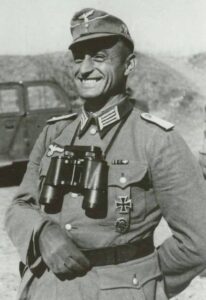
There were, however, some good people in the German Army. One was an officer named Josef “Sepp” Gangl, who opposed the Nazis. Gangl had a small group of men who were loyal to him. Together they intervened to protect the prisoners and locals. Heavily outnumbered, Gangl sent word to the American forces in the area seeking aid. Gangl called for help, and he was answered by Captain John C “Jack” Lee Jr, who arrived with a band of volunteers and a single Sherman tank. It was such a strange group of enemies, who found themselves working together for something that was more important than the war they were in…human lives. Working together were French prisoners, American troops, and Wehrmacht soldiers in an effort to bravely defended the castle against the SS. The French prisoners included former prime ministers, generals, tennis star Jean Borotra, and even Charles de Gaulle’s sister. This, 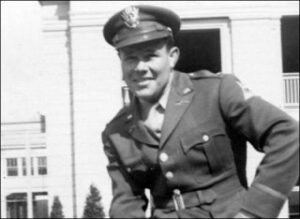 Operation Cowboy, was one of two known times during the war in which Americans and Germans fought side by side. That is such a shocking turn of events, in fact many called it the strangest battle of World War II. Nevertheless, while the tank was blown up, it that made no difference, and in the end, the SS weren’t able to breach the castle. By late afternoon, an American relief force arrived at Itter Castle and captured the SS unit. In the battle, there was only one casualty on the defending side. Sadly, Gangl was slain by a sniper while trying to spot the position of the anti-tank gun from an observation post. He had given his life so that others might live. It was a brave and heroic act.
Operation Cowboy, was one of two known times during the war in which Americans and Germans fought side by side. That is such a shocking turn of events, in fact many called it the strangest battle of World War II. Nevertheless, while the tank was blown up, it that made no difference, and in the end, the SS weren’t able to breach the castle. By late afternoon, an American relief force arrived at Itter Castle and captured the SS unit. In the battle, there was only one casualty on the defending side. Sadly, Gangl was slain by a sniper while trying to spot the position of the anti-tank gun from an observation post. He had given his life so that others might live. It was a brave and heroic act.
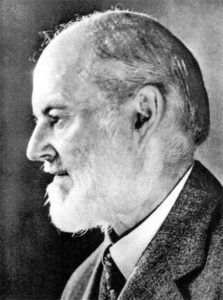 We have all heard of the Rolls Royce, and these days it is a car that is close to my heart, not because I own one, but because I’m pretty sure there are family ties to my son-in-law, Travis Royce and now, my daughter, Amy Royce, and their children, Shai and Caalab. I don’t know that for sure, but I have a hunch, and it’s not just the name. Time will tell as I research further.
We have all heard of the Rolls Royce, and these days it is a car that is close to my heart, not because I own one, but because I’m pretty sure there are family ties to my son-in-law, Travis Royce and now, my daughter, Amy Royce, and their children, Shai and Caalab. I don’t know that for sure, but I have a hunch, and it’s not just the name. Time will tell as I research further.
Sir Frederick Henry Royce, 1st Baronet, OBE, was an English engineer. OBE stands for “The Most Excellent Order of the British Empire and is a British order of chivalry, rewarding contributions to the arts and sciences, work with charitable and welfare organizations, and public service outside the civil service.” Sir Royce was famous for his designs of car and aeroplane engines with a reputation for reliability and longevity. Of course, we probably know much more about the product that brought him fame, than we do the man and his partners, who brought that product to life.
Sir Frederick Henry Royce was born in Alwalton, Huntingdonshire, near Peterborough on March 27, 1863, to James and Mary Royce (née King). He was youngest of their five children. His father ran a flour mill which he leased from the Ecclesiastical Commissioners. Unfortunately, the business failed, and the family moved to London. After his father died in 1872, Royce had to go out to work selling newspapers and delivering telegrams after only one year of formal schooling. With such a beginning, it would seem quite unlikely that Sir Royce would ever amount to anything, but in 1878 with the financial help of an aunt, Royce 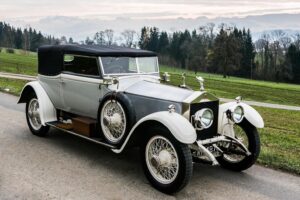 was able to start an apprenticeship with the Great Northern Railway company at its works in Peterborough. Unfortunately, the money ran out after three years, and Royce was again forced to change careers. He worked for a short time with a tool-making company in Leeds, and then returned to London and joined the Electric Light and Power Company. In 1882, he moved to their Liverpool office and began working on street and theatre lighting.
was able to start an apprenticeship with the Great Northern Railway company at its works in Peterborough. Unfortunately, the money ran out after three years, and Royce was again forced to change careers. He worked for a short time with a tool-making company in Leeds, and then returned to London and joined the Electric Light and Power Company. In 1882, he moved to their Liverpool office and began working on street and theatre lighting.
Following a few other ventures that produced minimal success, Royce partnered with Charles Rolls (1877–1910) and Claude Johnson (1864–1926) and founded Rolls-Royce. The new company initially focused on large 40-50 horsepower motor cars, the Silver Ghost and its successors. Royce produced his first aero engine shortly after the outbreak of the First World War and aircraft engines became Rolls-Royce’s principal product. While the Rolls Royce aeroplane engine was a much-needed product during the war, it will always be the famous Rolls Royce automobiles that people will remember. They are beautifully elegant, and to be desired by those who have the means to afford them, as well as those who wish they could afford them.
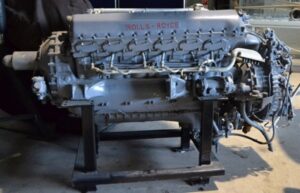
Henry Royce married Minnie Punt in 1893, but they had no children. The couple separated in 1912. Royce, who lived by the motto “Whatever is rightly done, however humble, is noble,” was appointed OBE in 1918, and was created a baronet, of Seaton in the County of Rutland, in 1930 for his services to British Aviation. Sir Royce’s health began to fail him in 1911 and he was finally forced to leave his factory in the Midlands at Derby. He took a team of designers and moved to the south of England, while spending winters in the south of France. He died at his home in Sussex on April 22, 1933. With no children, the baronetcy became extinct on his death.

 My son-in-law, Travis Royce is skilled at a number of things. He worked for a number of years at a radio station in Casper, Wyoming, and the commercials he did there, were so good that they still use some of them today…8 years after he moved to Washington state. We are always laughing when we hear one of the ads these days, because we know how long it has been since he worked there. One time my sister, Alena Stevens heard one of his ads, and called me to “discreetly” ask if he had moved back, without my daughter, Amy Royce, who is his wife. We all got a really good laugh over that one, since they had been married 25 years at the time, and almost 28 now, so Travis wouldn’t move anywhere without Amy.
My son-in-law, Travis Royce is skilled at a number of things. He worked for a number of years at a radio station in Casper, Wyoming, and the commercials he did there, were so good that they still use some of them today…8 years after he moved to Washington state. We are always laughing when we hear one of the ads these days, because we know how long it has been since he worked there. One time my sister, Alena Stevens heard one of his ads, and called me to “discreetly” ask if he had moved back, without my daughter, Amy Royce, who is his wife. We all got a really good laugh over that one, since they had been married 25 years at the time, and almost 28 now, so Travis wouldn’t move anywhere without Amy.
Travis’ latest venture is building furniture. He is really good at it, and I would go so far as to say that he’s a natural. I think he would also be very good at refurbishing furniture too. Travis is just getting started in that 
 business, but he enjoys it very much, and on the plus side, he likes working from home, now that Amy also works from home. Travis and Amy love spending their time together and on their off hours, love being out in their back yard, which they have fixed up beautifully. It is an ongoing project that is very dear to their hearts.
business, but he enjoys it very much, and on the plus side, he likes working from home, now that Amy also works from home. Travis and Amy love spending their time together and on their off hours, love being out in their back yard, which they have fixed up beautifully. It is an ongoing project that is very dear to their hearts.
When Travis and Amy bought their house, a riding lawnmower came with it for the large yard. Recently that lawnmower died, and they had to buy a new mower. The old mower was a red Scotts riding mower, but now, they are the proud owners of a John Deere. It is a beauty of a machine, and for a mowing fanatic like Travis, it is a big step up. Everyone knows that John Deere is the Cadillac of farm, ranch, and yard equipment, so now 
 Travis can honestly say that he owns the Cadillac of tractors. Now that the weather is warming up, Amy will know where to find Travis, because he is either in the back yard enjoying the day, or in the yard mowing…if he’s not working, that is. Travis has always loved mowing, and he even mowed our yard in Casper, before they got a house of their own, so he had his own yard to mow. We sure missed having him mow our yard back then. My husband, Bob, Travis’ father-in-law, would much rather work on a car than do yard work, so it was nice to have a mowing fanatic in the family, and we sure do miss it now that they live so far away. Travis, you’re welcome to mow here anytime you want to. Today is Travis birthday. Happy birthday Travis!! Have a great day!! We love you!!
Travis can honestly say that he owns the Cadillac of tractors. Now that the weather is warming up, Amy will know where to find Travis, because he is either in the back yard enjoying the day, or in the yard mowing…if he’s not working, that is. Travis has always loved mowing, and he even mowed our yard in Casper, before they got a house of their own, so he had his own yard to mow. We sure missed having him mow our yard back then. My husband, Bob, Travis’ father-in-law, would much rather work on a car than do yard work, so it was nice to have a mowing fanatic in the family, and we sure do miss it now that they live so far away. Travis, you’re welcome to mow here anytime you want to. Today is Travis birthday. Happy birthday Travis!! Have a great day!! We love you!!
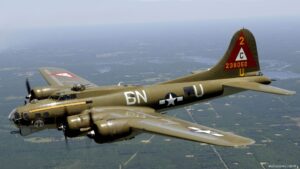 When the airmen went off to war, their hope was that their plane would be able to stand up to the attacks that would be coming their way. In World War II, big war planes were very new. The men who spent the war in them, needed a plane that would take a hit and keep on flying. They would love to have a flying suit of armor, but it also had to be able to fly. A plane that was too heavy, obviously wouldn’t fly, and yet, they needed a plane that could get hit with shrapnel or bullets and still stay in the air. They knew that they couldn’t make sure that every plane that was hit would make it home, but they needed as many as possible to do just that.
When the airmen went off to war, their hope was that their plane would be able to stand up to the attacks that would be coming their way. In World War II, big war planes were very new. The men who spent the war in them, needed a plane that would take a hit and keep on flying. They would love to have a flying suit of armor, but it also had to be able to fly. A plane that was too heavy, obviously wouldn’t fly, and yet, they needed a plane that could get hit with shrapnel or bullets and still stay in the air. They knew that they couldn’t make sure that every plane that was hit would make it home, but they needed as many as possible to do just that.
There were a number of planes that were considered almost indestructible, or at least as indestructible as it is possible to be for an airplane in a war zone. Two of them…the Boeing B-17 Flying Fortress, a four-engined heavy bomber developed in the 1930s for the United States Army Air Corps (USAAC), and the Boeing B-29 Superfortress, a US 4-engine propeller bomber, manufactured from 1943 to 1946 and used throughout the Korean War, as well as World War II. The name “Fortress” was coined when B-17, with its heavy firepower and multiple machine gun emplacements, made its public debut in July 1935. A reporter for The Seattle Times, Richard Williams, exclaimed, “Why, it’s a flying fortress!” The Boeing Company saw the value of that name and immediately had it trademarked. The truth of the matter is, however, that the planes had the ability to take a hit and still bring their boys home most of the time, provided the damage wasn’t too heavy.
These heavy bombers are bomber aircraft capable of delivering the largest payload of bombs, as well as the longest range, which is takeoff to landing distance, of their era. For those reasons, the heavy bombers are 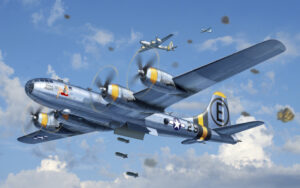 usually among the largest and most powerful military aircraft at any point in time. Nevertheless, as the 20th century wound down, the heavy bombers were largely superseded by strategic bombers. The strategic bombers were often smaller in size, which allowed for much longer ranges and by necessity, these were capable of delivering nuclear bombs. It was a sign of the times, but for all World War II buffs, like me, it was a sad end of an era. The newer planes are great, don’t get me wrong, but they just don’t have the presence, at least in my mind, that the World War II heavy bombers did. Those old planes had a grace that the newer stuff simply doesn’t have. I suppose that my love of the B-17, at least, stems from the fact that it was the plane that brought my dad home safely…so he could become my dad.
usually among the largest and most powerful military aircraft at any point in time. Nevertheless, as the 20th century wound down, the heavy bombers were largely superseded by strategic bombers. The strategic bombers were often smaller in size, which allowed for much longer ranges and by necessity, these were capable of delivering nuclear bombs. It was a sign of the times, but for all World War II buffs, like me, it was a sad end of an era. The newer planes are great, don’t get me wrong, but they just don’t have the presence, at least in my mind, that the World War II heavy bombers did. Those old planes had a grace that the newer stuff simply doesn’t have. I suppose that my love of the B-17, at least, stems from the fact that it was the plane that brought my dad home safely…so he could become my dad.

